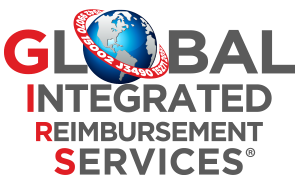Currently, approximately thirty-three percent of the population that is 65 and older in the United States (over 25 million people) register for Medicare Advantage. According to the Centers for Medicare and Medicaid Services (CMS), Medicare Advantage plans will see growth in population and geographic expansion.
According to CMS, the average number of Medicare Advantage plans per county will increase from about 39 plans in 2020 to 47 in 2021. There will also be an 18 percent increase in plans available in rural counties. CMS expects 42 percent of all Medicare beneficiaries to choose Medicare Advantage plans for 2021.
As monthly premiums for Medicare Advantage plans continue to decline, and with charges expected to go from an average of $23.63 this year to $21 in 2021, as announced by CMS. Enrollment in Medicare Advantage plans is expected to grow by 2.5 million beneficiaries to a record-high 27 million.
Medicare Advantage serves as the private insurance alternate to traditional Medicare. Many Medicare beneficiaries tend to enroll in Medicare Advantage plans, because they often cover services that traditional Medicare will not pay at no extra fee. However, Medicare Advantage plans can be more expensive if patients get sick due to the copays and other costs.
The first barrier eligible beneficiaries face when determining Medicare coverage is understanding how the different parts all coincide. Traditional Medicare consist of two parts: Part A and Part B.
Medicare Part A
Part A includes hospitalization, and most beneficiaries have no monthly premium.
Medicare Part B
Part B includes outpatient care, doctor visits, and has a traditional monthly premium. For 2020, the premium is $144.60, while higher-income people pay more. Beneficiaries can pick any doctor who accepts Medicare and that provider is paid directly from the government.
Medicare Part D
Part D consists of prescription drug coverage, which is offered by private insurers. The drugs that are covered and the expense paid out of pocket fluctuate. Monthly premiums vary as well but the average cost for medication in 2020 has been $32.74.
Medicare Part C
Medicare Part C is Medicare Advantage. Rather than add to the other parts of Medicare, Medicare Advantage plans replace them. Insurers that offer Medicare Advantage are required by law to offer all the benefits of Part A and Part B, and most plans include Part D drug coverage as well. Additional benefits such as hearing, vision and dental care are typically offered by these plans as well, and that alone makes them more appealing to consumers because those benefits are not offered by traditional Medicare.
Medicare Advantage plans are typically regional. The plans function like employer-provided group health insurance. For the insurance to pay, consumers must choose health care providers in the insurance network, and additional services may require preapproval for certain types of care or referrals to see specialists. If consumers go outside of the network, their costs may not be covered or may not apply to their out-of-pocket limits either.
The average Medicare beneficiary has access to 28 Medicare Advantage options, with varying networks, coverage, deductibles, copays and coinsurance, according to the Kaiser Family Foundation. Overall, Medicare Advantage plans tend to be less expensive upfront, but can be more expensive overall if patients require a lot of medical treatment. Consumers who want to switch from one Medicare Advantage plan to another can do so during annual enrollment periods. During open enrollment, consumers are considering not only their plan options, but their out-of-pocket costs, their choice of providers, and the formulary placement of their medications.
When contemplating a Medicare strategy for #medtech products, consider both traditional Medicare as well as Medicare Advantage. GIRS has worked with the top Medicare Advantage plans in the U.S. to help implement our clients’ Medicare strategies. As more consumers become Medicare beneficiaries and as Medicare Advantage grows, GIRS is #LookingAheadoftheCurve by educating clients about the potential impact of Medicare enrollment on their payer mix and helping clients redefine payer market access strategies to secure Medicare coverage and preferred status for their products.
For more information, email us at info@girsinc.com or call us at 901-834-9119.
Disclaimer: The information in this blog is based on payer information which is dynamic. It is accurate at the time of posting but should not be construed to be reimbursement or legal advice. CPT® is the trademark of the American Medical Association (AMA).
Sources:
https://www.newsday.com/business/medicare-advantage-plans-health-care-cost-1.49767611
https://www.aarp.org/health/medicare-insurance/info-2020/medicare-advantage-rates-2021.html
About GIRS
For more than 17 years, GIRS has been assisting medical technology manufacturers with their market uptake and reimbursement strategies so that patients can have access to the care that they need. To implement successful market access strategies, the GIRS Value Discovery Landscape Assessments® team and the Payer Advocacy Compass® team work together to develop and implement foundation reimbursement landscape and payer advocacy strategies to obtain positive coverage, appropriate payment, and innovative payer contracting arrangements to improve market uptake. For more information, email us at info@girsinc.com or call us at 901-834-9119.

